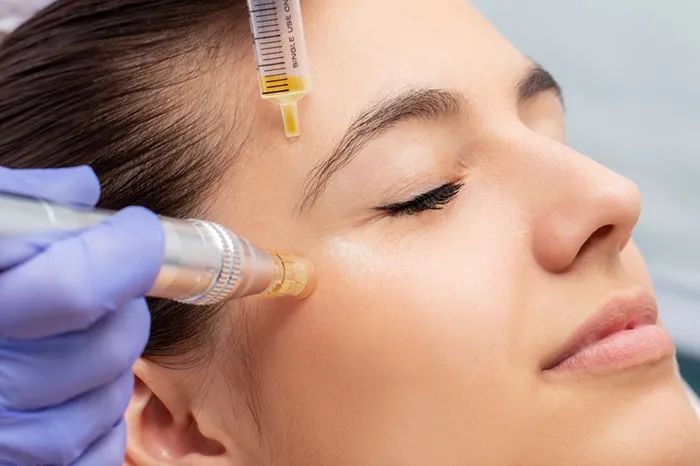The question of whether Platelet – Rich Plasma (PRP) is really worth it is a common one among individuals considering hair restoration, skin rejuvenation, or other medical and aesthetic treatments. To determine its value, it’s essential to examine various aspects, including its effectiveness, cost, potential side effects, and individual patient needs.
Understanding PRP Therapy
PRP therapy involves using a patient’s own blood, which is processed to isolate platelets and growth factors. These components are then injected back into the scalp or other areas to promote healing and tissue regeneration. PRP has been used for decades in wound healing and is now widely applied for hair restoration and other aesthetic treatments.
Effectiveness of PRP
Hair Restoration: In the realm of hair restoration, PRP has shown promise. For those suffering from androgenetic alopecia (male or female pattern baldness), PRP can stimulate hair follicle stem cells. Growth factors in PRP, such as platelet – derived growth factor (PDGF) and vascular endothelial growth factor (VEGF), encourage the growth and activation of these follicles. Clinical studies have demonstrated that many patients experience an increase in hair density and thickness over time, with some noting reduced hair shedding. However, results vary from person to person, and it may take several sessions spaced weeks apart to see significant improvements. For patients with early – stage hair loss or who are looking for a non – surgical option to enhance their existing hair, PRP can be a viable and effective solution.
Skin Rejuvenation: When it comes to skin, PRP can work wonders. It stimulates collagen and elastin production, reducing the appearance of wrinkles, fine lines, and improving skin texture. By promoting cell turnover, it gives the skin a fresher, more youthful glow. The anti – inflammatory properties of PRP also help in reducing redness and evening out skin tone. Patients who have undergone PRP for skin rejuvenation often report improved skin elasticity and a more radiant complexion. In cases of acne scars or other minor skin imperfections, PRP can contribute to the regeneration of skin tissue, gradually reducing the visibility of these scars.
Orthopedic and Other Medical Applications: In orthopedics, PRP has been used to treat tendon and ligament injuries, as well as bone fractures. It can accelerate the healing process by promoting tissue repair and reducing inflammation. For athletes or individuals with musculoskeletal injuries, this can mean a faster return to normal activities. However, the success of PRP in these cases depends on the severity of the injury and individual healing capabilities.
Benefits of PRP Therapy
Non-Surgical and Minimally Invasive: PRP therapy is a non-surgical option that does not require extensive downtime or recovery.
Natural and Safe: Since PRP uses the patient’s own blood, the risk of allergic reactions or rejection is minimal.
Combination Therapy: PRP can be combined with other treatments, such as hair transplants or medications like minoxidil, to enhance overall results.
Risks and Limitations
One of the advantages of PRP is that it is generally considered safe, as it uses the patient’s own blood, reducing the risk of allergic reactions or rejection. However, there are still some potential side effects. These can include mild swelling, redness, and bruising at the injection sites, which usually subside within a few days. In rare cases, there may be a risk of infection, although proper sterilization and hygiene during the procedure can minimize this. Compared to more invasive surgical procedures, the side effects of PRP are relatively minor, making it an attractive option for those who want to avoid significant risks.While PRP therapy offers many benefits, it is not without limitations.
Cost: PRP treatment can be expensive, and it is often not covered by insurance.
Multiple Sessions Required: Optimal results typically require multiple sessions, and maintenance treatments are necessary to sustain the benefits.
Variable Results: The effectiveness of PRP can vary from person to person, and it may not be as effective for individuals with severe hair loss.
Individual Patient Needs and Expectations
The worth of PRP ultimately depends on individual patient needs and expectations. For someone with a busy lifestyle who wants a non – invasive, relatively quick treatment option for hair or skin concerns, PRP can fit the bill. It allows patients to resume their normal activities shortly after the procedure, with minimal downtime. On the other hand, patients with more severe conditions or those who have very high expectations of dramatic, immediate results may find that PRP does not fully meet their needs. It’s important for patients to have realistic expectations and understand that the effects of PRP may take time to become fully apparent.
Conclusion
Whether PRP is really worth it is a subjective decision that depends on multiple factors. Its effectiveness in various applications, cost, side – effect profile, and individual patient circumstances all play a role. For many, the potential benefits of PRP in terms of hair restoration, skin rejuvenation, and orthopedic healing outweigh the costs and risks. However, it’s crucial for individuals to consult with a qualified medical professional, discuss their specific goals and concerns, and make an informed decision based on a comprehensive understanding of what PRP can and cannot offer.
Related topics:
How Much Does PRP Treatment Cost?
Can PRP Really Help Restore a Receding Hairline?


